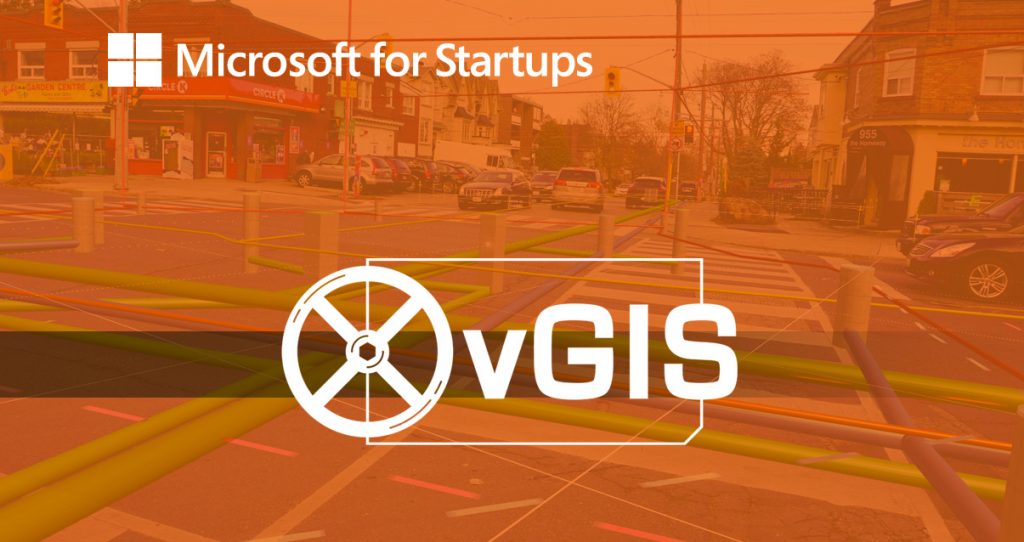
vGIS, visualizing the invisible
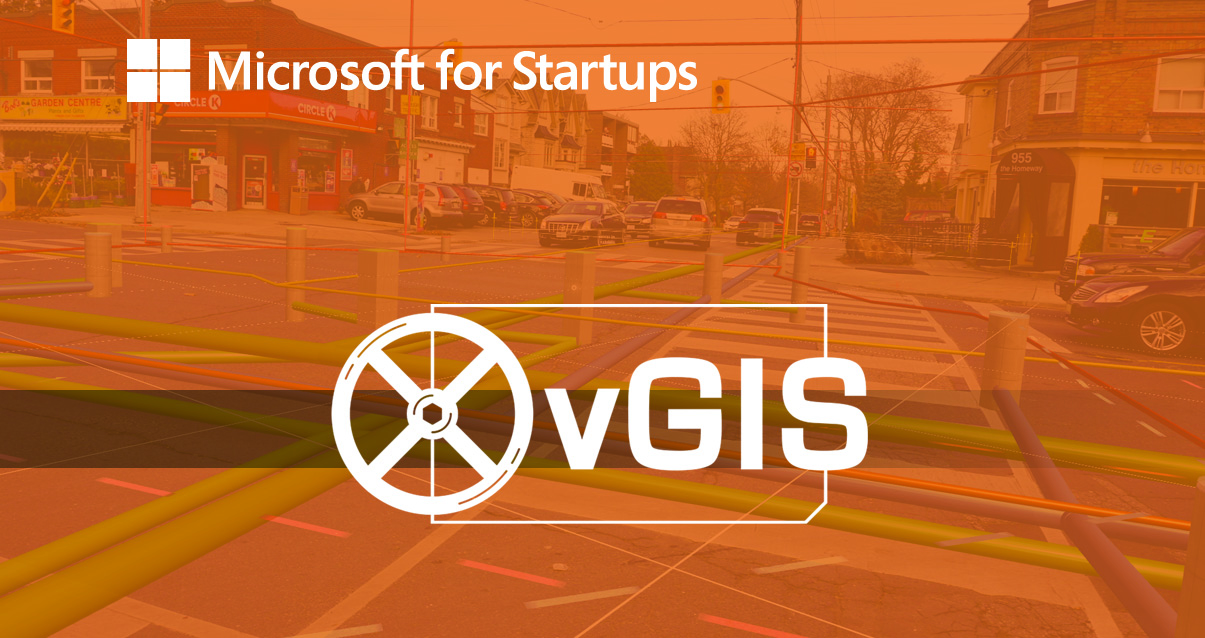
If you’re curious about how holograms and augmented reality get used in the real world, then keep reading! Launched in 2016, the revolutionary vGIS platform uses Microsoft HoloLens and augmented reality to reveal the location of infrastructure buried underground. Over 40 sites globally, including the City of Toronto and the City of Auburn, already use vGIS to work wonders!
If you think about it, local government inherits monumental problems. From repairing potholes and broken watermains, to maintaining our sewers, utilities, roads, transit systems, schools, parks, and more. We ask a lot from our cities, towns, districts, and counties. No wonder they run out of money! All those demands add up quickly to billions of dollars of infrastructure repair costs, just to keep everything going.
One big challenge with repairing municipal infrastructure is access; much of it is located underground, making it hard to find and costly to reach. Work teams must dig around to locate what they’re looking for, like a shut-off valve. Often decades old, municipal infrastructure isn’t properly mapped. Even with a decent map on hand, not everybody has the spatial imagination to figure out where best to dig.
Every second counts
Meanwhile, the longer it takes to search and dig, the more it costs, the greater the delays and commuter stress. With so many billions of dollars and our quality of lives at stake, the demand for visualization technology to allow construction teams to “see underground” has reached a pinnacle.

Enter vGIS
The vGIS platform, created by parent company Meemim, uses holograms and augmented reality to display infrastructure—like pipes, lines, cables, and other assets—in-field and in real time. Teams gain the ability to peer through the ground and assess hidden infrastructure, gain situational awareness, and increase productivity. Teams only dig exactly where they need to, which is smarter and safer. Click on the video link below to see vGIS at work.
“Our goal is to create highly functional, visually appealing, easy-to-use tools that address specific business challenges. vGIS helps users perform jobs better, faster, and more safely.” – Alec Pestov, Founder & CEO
Who uses it?
An increasing number of municipalities and utilities use vGIS to find and repair infrastructure, avoid accidental line cuts during excavations, and address geographic information system (GIS) documentation gaps. Locator services use vGIS to speed up line identification. Contractors rely on vGIS to reduce delays and speed up work. In short, anyone who needs to see underground needs to get their hands on this tech!
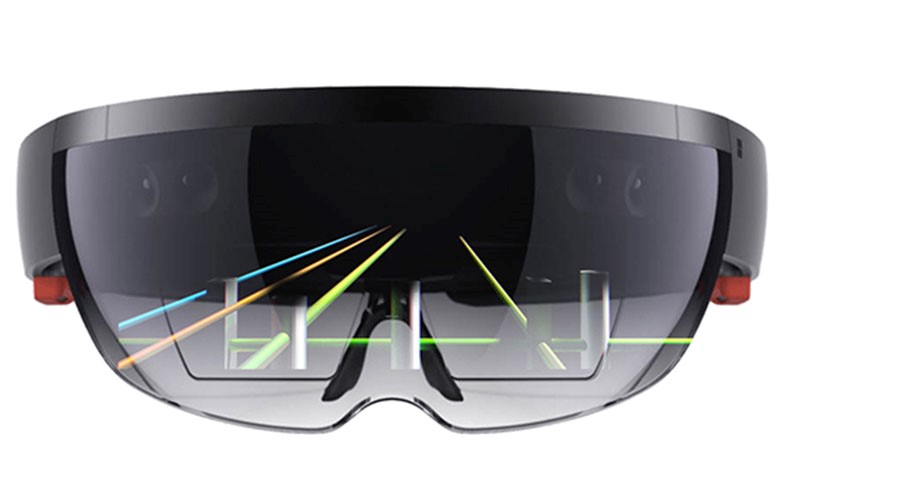
How vGIS works
vGIS uses augmented, mixed, and virtual-reality technology and the power of the cloud to deliver space-age results. vGIS runs on devices including the Microsoft HoloLens, the first self-contained, holographic computer that you wear like glasses (see above). Users put on the HoloLens and vGIS converts traditional 2D and 3D GIS data, maps, models, and CAD into a single graphic overlay in the real world. It even works in the winter, when efficiency is at its most important. Check out the video to watch it “see” through snow!
Azure behind the scenes
The vGIS backend runs in the cloud, on Microsoft Azure. The system connects to the existing GIS installations, consumes the data municipalities already collect, and processes it all in Azure on the fly. It then sends back visualization data for the end-point device running Unity (a gaming engine) to render in real time.
“We spent a lot of time researching the physical properties of the world to make sure that the field of view and all other elements align and track nicely with the physical world.”
Secure & compliant
Because the Microsoft Cloud operates through a global network of local datacentres, vGIS can geolocate servers wherever their business takes them in Canada, Europe, Australia, the United States and beyond. They can ensure their customers stay compliant with local data storage rules and regulations, including GDPR.
An unlikely start
vGIS sprung from a failed startup business. Intent on salvaging their innovative work, the founders saw the huge potential of the technology and decided to reboot it, this time to solve a specific business pain point. The feasibility research all pointed to the massive, untapped demand for underground visualization solutions.
“We joined forces with a group of GIS experts who told us what they needed and wanted from a field visualization solution. Some were looking for a solution to satisfy their needs for years.”
Customer-driven
They combined their expertise and visualization tools with the expertise of GIS experts in the field to create the initial framework for the solution, which they conceived in 2016 and launched in early 2017. Not surprisingly, word of this revolutionary solution spread fast. As vGIS quickly onboarded customers, the development team refined and expanded the solution to address their new customers’ diverse needs and wants.
“When we started designing vGIS, we understood the need for making a scalable solution. That’s what makes us unique. We are one of the very few industrial AR companies in the world with a truly turnkey scalable solution.”
Speed to market
Powered in the Microsoft Cloud and available through off-the-shelf devices, like the HoloLens or tablets, the vGIS solution can be deployed with lightning agility. How fast? vGIS got a large pipeline operator, a company with 5,000 miles of pipeline, up and running within 30 minutes after signing the contract! In the mixed realty world—where projects take months, even years to develop—results like these are simply unheard of.
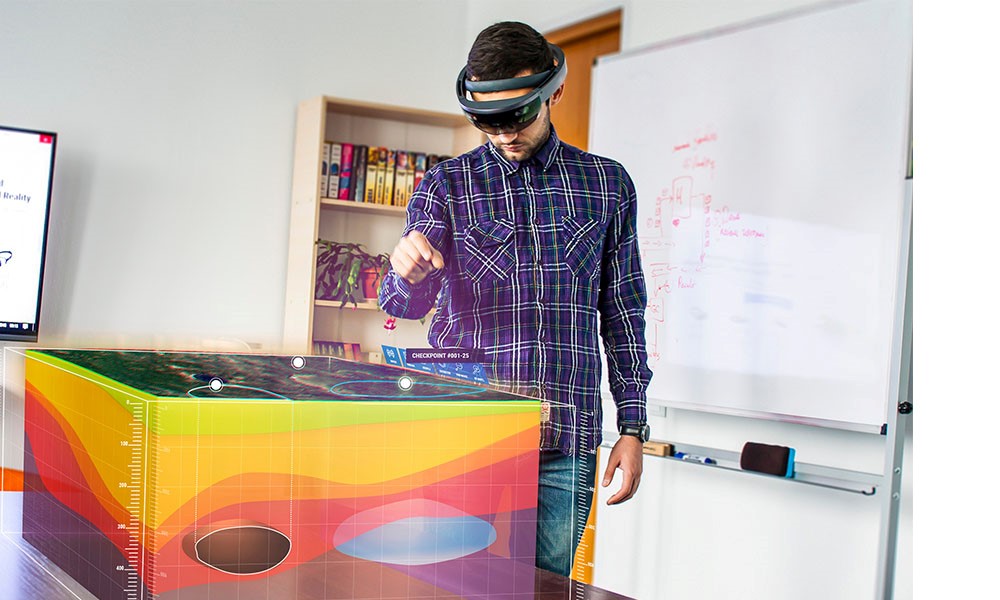
Planning & Exploration
Speaking of pipelines, vGIS has made inroads quickly into other industries, such as mining and exploration as well as oil and gas. Even the real estate industry has jumped on board, using vGIS to visualize buildings, proposed structures, and infrastructure with holograms on a conference room table. Users can zoom in and walk around full-scale models in accurate geographic locations to conduct tours and explore what-if scenarios.
CityNext Award finalist!
Municipalities around the world aren’t the only ones excited about vGIS. They’ve been named as a finalist for the 2018 Microsoft CityNext Award, a program designed to empower communities to be more sustainable, prosperous, and inclusive. vGIS beat out over 2,600 entries from 115 countries to end up in the top four in their category. It’s quite the achievement and a testament to their innovative work with Microsoft tech!
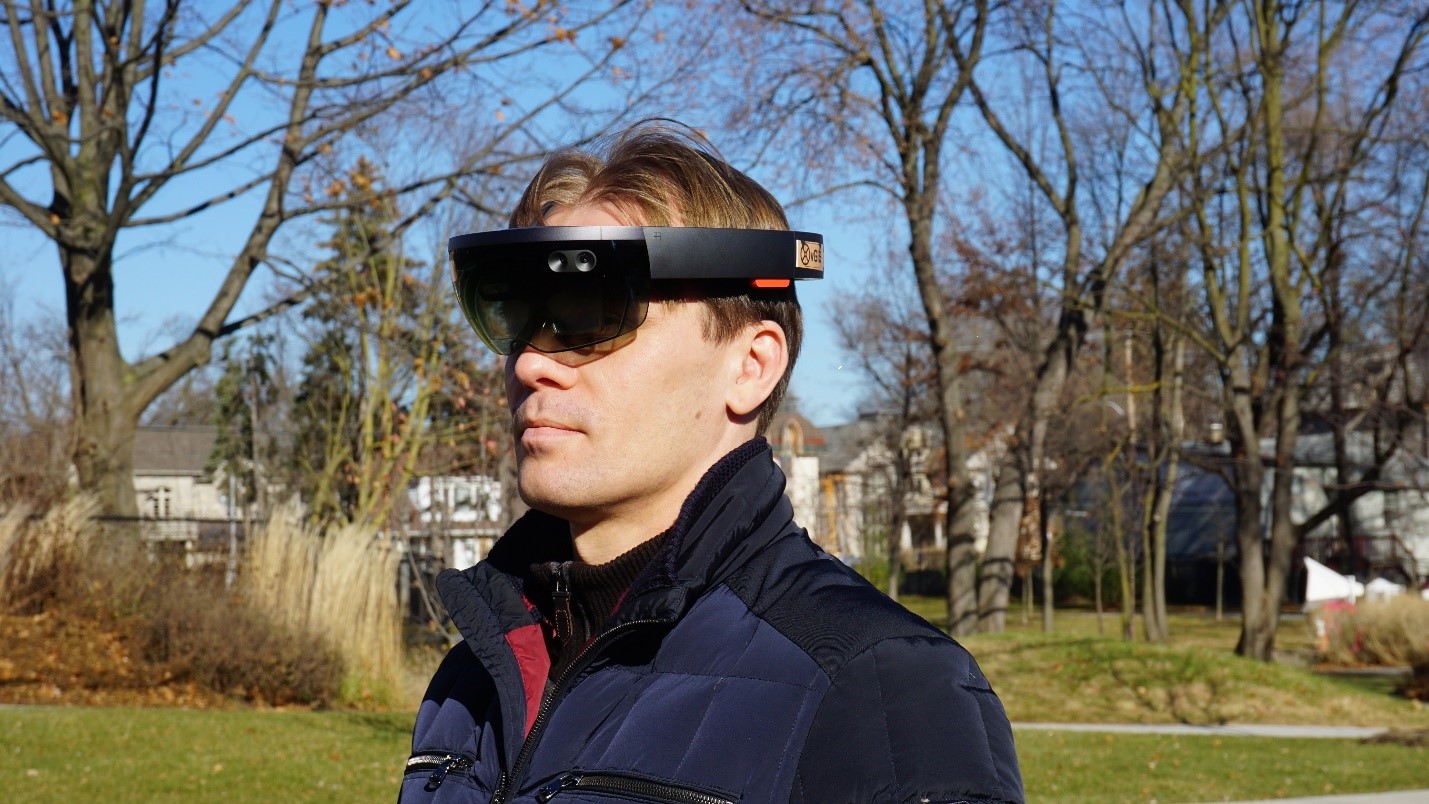
Meet the Founder
Founder and CEO, Alexandre Pestov is an accomplished productivity expert and startup specialist with interests in visualization and GIS technologies. Alec has 20 years of experience in global management consulting and held several senior management roles in multiple industries. Today, his company employs close to 20 people and has offices in Toronto, Ontario and Wilmington, Delaware.
“As soon as we started the company, we began looking into who we can approach to help us excel. We found, in Microsoft and Azure, two industry giants that open doors for us and support us.”
A Microsoft for Startups project
vGIS received support from Microsoft for Startups, which provides promising startups with software, service, support, marketing expertise and cloud services—all designed to help them launch successfully. Check out these cool stories of other entrepreneurs who received assistance from Microsoft.
“It’s a win-win. Microsoft has been instrumental to providing the technology, spreading the word, opening doors for us, and assisting us in many ways. We would advise any startup or growing company to explore a relationship with Microsoft.” – Alec Pestov, Founder & CEO
Do you run a startup?
Learn how Microsoft for Startups works. This program provides qualified privately held startups with development and testing software; training; phone support; Azure services, plus go-to-market business networking opportunities. To qualify, your startup must be less than five years old and earn less than US $1 million annually.




